Cat Quest is a fast-paced action RPG set in a fantasy world rife with anthropomorphic felines and cat puns. I play as a nameless cat who washes ashore on a continent called Felingard following a shipwreck. While searching for their sister, the player character discovers they are a Dragonblood, a cat with the rare ability to kill dragons. This power crosses their path with a dark cat named Drakoth, who holds the player character’s sister hostage and has sinister plans for their Dragonblood abilities. Accompanied by a friendly and talkative spirit named Pirry, I guide the player character across the Felingard continent, defeating dragons, exploring dungeons, and completing sidequests, all while searching for Drakoth and trying to foil his plan.
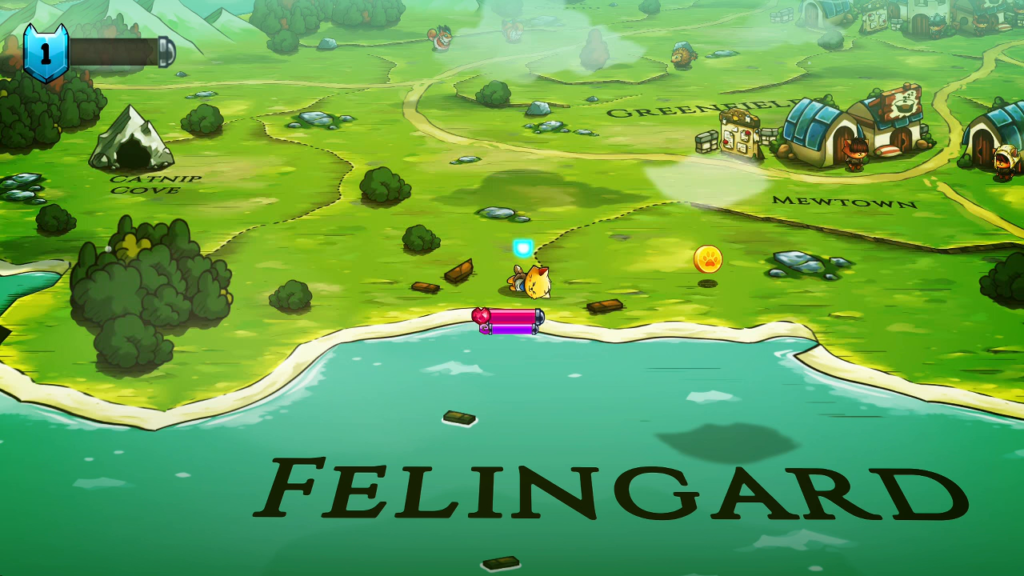
Usually when a videogame critic refers to the world as a “map,” they are speaking figuratively. Here the idea is literal; Felingard is rendered as an actual map, a single persistent space scrawled with cartographic detail. Dotted lines and Xs mark routes and destinations in red ink. The names of towns and landmarks are scrawled in black ink on the ground beside them. This design and the short distances between towns and wilderness, between good cats and bad creatures, between starts and destinations, ensures the player character is always scampering to and fro between them. There is little-to-no downtime to endure.
Even frequent moments of quest-launching conversation do little to slow the pace. Dialog is kept to a minimum, ensuring I absorb every word even as I click rapidly through each text bubble. This is further to Cat Quest’s benefit; its premise of an unknown hero descending from a rare bloodline that lets them defeat dragons parodies Skyrim, already a tired source of mockery even when Cat Quest was newly released in 2017. Luckily, the player character barrels through this and other embarrassing material too fast for me to notice how unfunny it all is. I am enthralled because I am always engaged with the adventure even when I am not engaged with its writing.
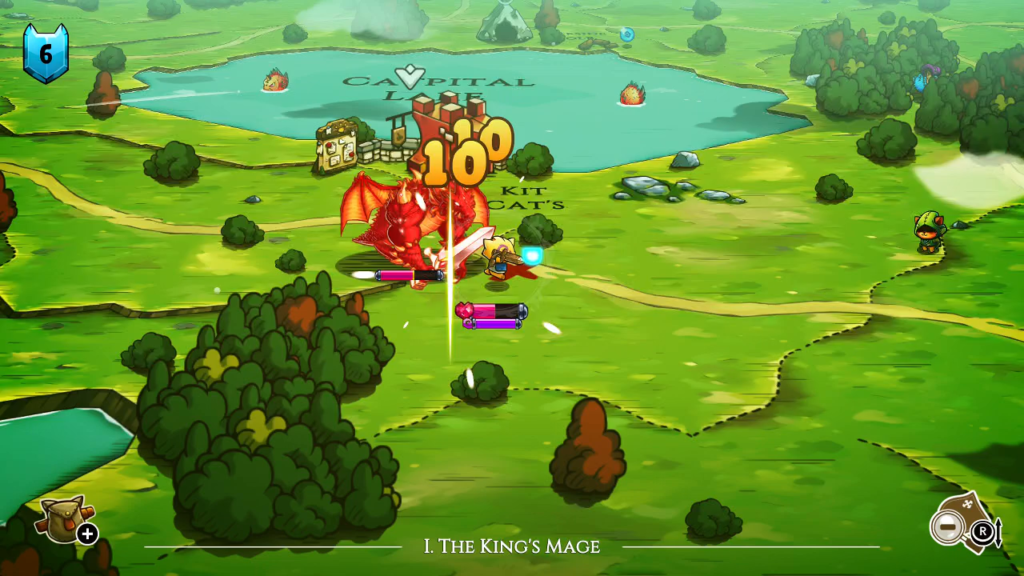
Combat contributes to Cat Quest’s sense of momentum. Everyplace outside the protective circles of Felingard’s villages is populated by hostile monsters and evil cats who will attack the player character on sight. Basic physical attacks are represented by small red circles around hostile creatures which fill with a darker red color. If the player character is standing within one when it completely fills, they will be hit by the attack.
Many enemies also have magical attacks. These work similarly to physical blows, but have longer charging times, affect larger areas, and take more dynamic shapes that depend on the spell being cast. Flamepurr affects a similar, but larger, circle to a physical attack. Lightnyan reaches far to the left and right, while Freezepaw stretches up and down. Being caught in one of these spells is never a good idea, as even the most powerful cats will take grievous harm from a magical attack.
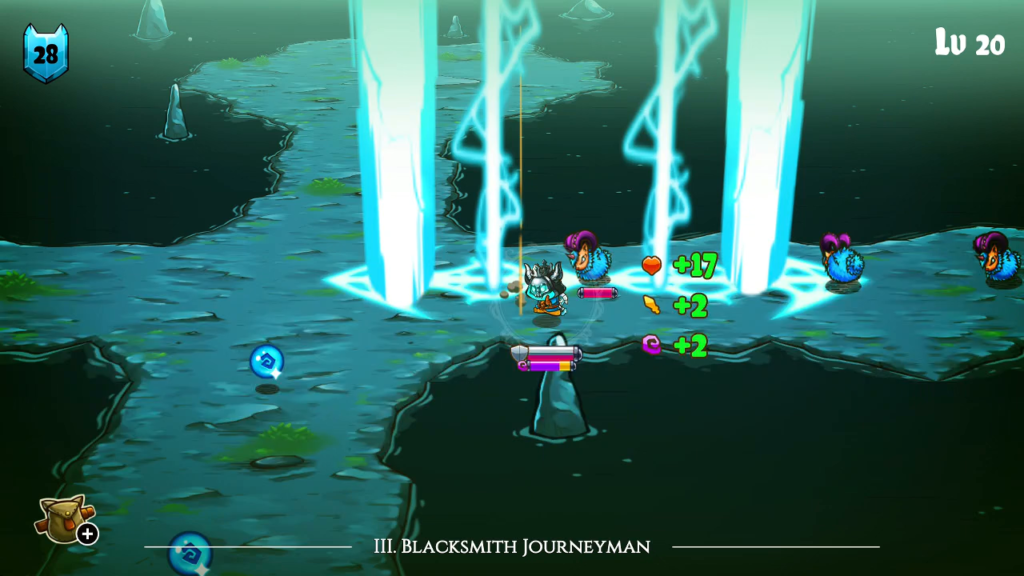
This system of telegraphed attacks and highlighted damage fields is easy to manage when dealing with only a single enemy, particularly since the player character is equipped with an effective dodge-roll. Cat Quest is rarely so generous as to present one-on-one fights, cramming every inch of the map with enemy clusters who will happily gang up on the player character. Though an enemy may briefly make itself vulnerable, it is likely one of its allies is already stepping in to charge up an attack of their own. Success in combat is based on defensive play, carefully navigating the red damage fields while searching for brief windows of opportunity to make decisive strikes. Recklessly attacking is a quick way to get the player character killed.
It seems a paradox that Cat Quest can maintain its incredible pace even when so much of its combat is focused on evasion and defense. Its pace is maintained by the manic speed of all its interlocking systems. There is no waiting for the next attack window to appear. When I steer the player character away from an enemy attack or spell, I steer them right back to counterattack in almost the same instant. Not a second of my time is spent idly waiting for an enemy to become vulnerable. Like traversing its world, Cat Quest’s combat is built on sheer momentum.
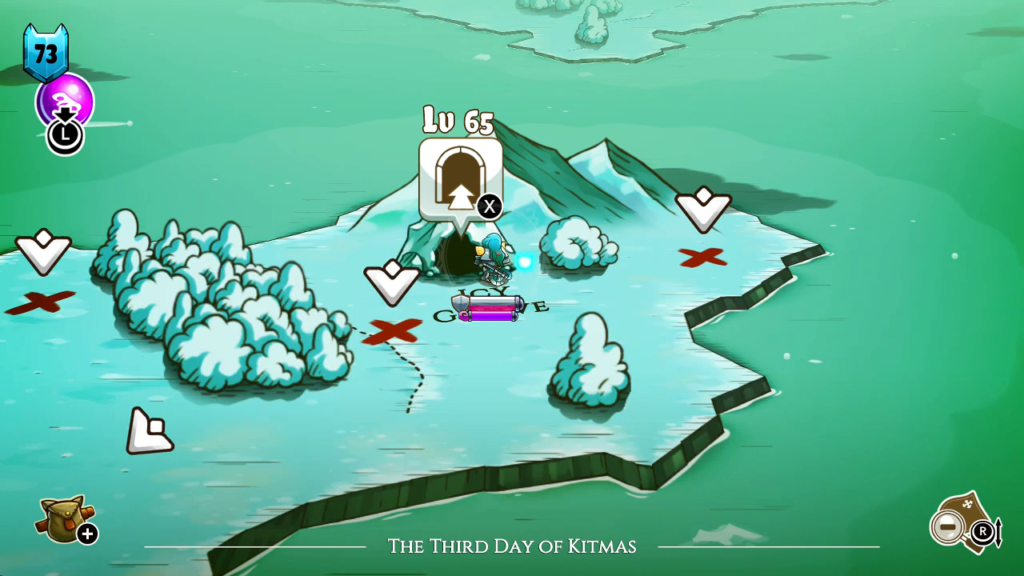
While exploring Felingard and between combat with its many wandering hazards, the player character comes across several dozen dungeons. These are where Cat Quest breaks from the persistent Felingard overworld, sending the player character into a simple area filled with enemies and treasures. These could easily become disruptive speed bumps in the pacing, but they avoid this by having instantaneous transitions from the overworld to the dungeon. Dungeons are quite small. Most may be finished in one or two minutes; the longest takes only a few minutes longer.
Combat is more intense in dungeons. There is less room to maneuver away from harmful attacks and deadly spells. There are no towns where the player character can retreat to safety. Each dungeon is clearly labeled with a recommended experience level to prevent me from getting the player character into situations they can’t handle. Diligent exploration of each dungeon is rewarded with one or more treasure chests.
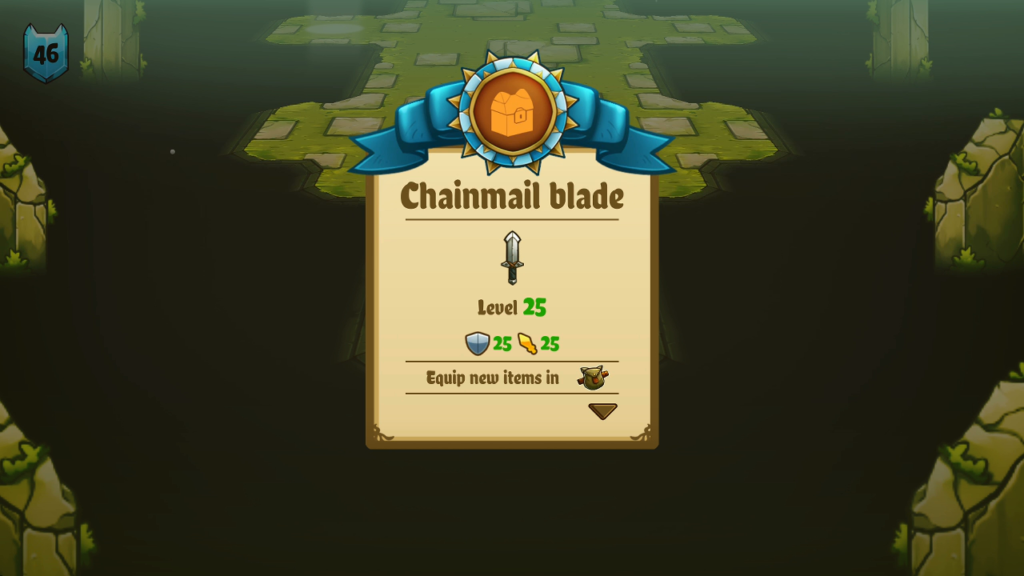
I determine how my player character functions in Cat Quest’s action RPG systems by the randomly generated pieces of equipment that come from opened treasure chests. Each boosts the player character’s statistics when equipped to them.
The equipment I outfit the player character with determines which class they functionally become. A Knight’s Helmet and Armor creates an extra armor meter on top of their default health meter; this takes damage before the health meter and regenerates over time. Building up the armor meter high enough turns the player character into an impervious tank whose armor absorbs and regenerates more damage than it takes. On the opposite end of the spectrum are the Mage’s Hat and Vest, which boost the player character’s mana pool and magical power but offer a comparatively small improvement to their health meter.
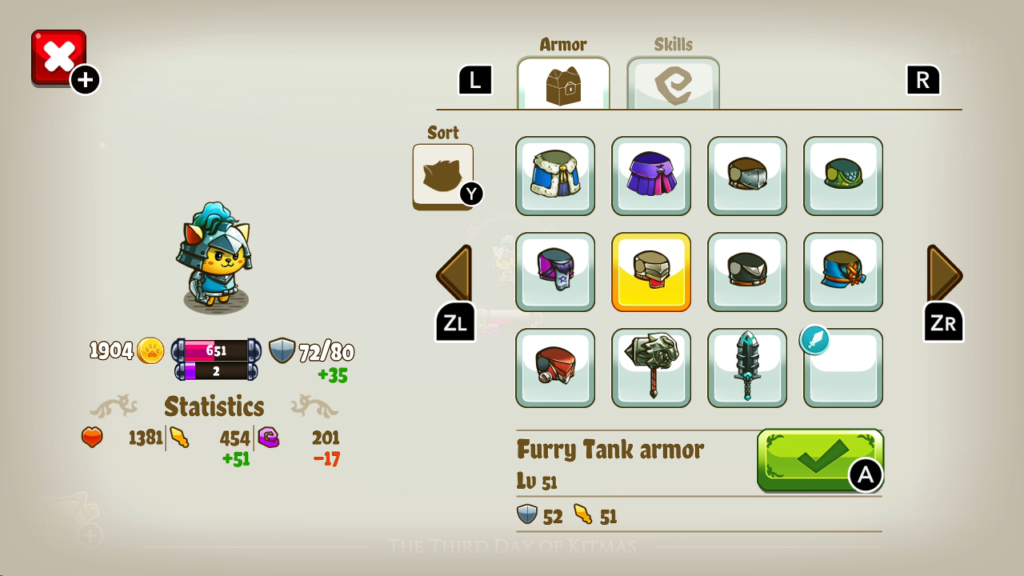
I end up leaning into the Squire’s armor early on. It boosts the player character’s magical and physical prowess in equal amounts. Since mana is regenerated through physical attacks, it seems like a good choice to find a middle ground between physical strength and powerful magical attacks. By the end of the adventure, I have transformed my player character into a fiery cannonball, charging across the map and through enemy groups, flinging Flamepurr blasts and sword swings in equal measure.
Looting this equipment also helps to sustain Cat Quest’s momentum. I am spared the chore of running back to town to unload unused or unusable equipment through a clever stacking system. When the player character discovers a second piece of equipment they already own, it will power up that piece of equipment instead of loading them down with a duplicate. This rewards thorough exploration and justifies the existence of Felingard’s many dungeons. The player character is empowered not only through leveling up by killing monsters and accumulating experience points, they also grow stronger through repeated discovery of equipment.
Not a single moment in Cat Quest is wasted on filler or backtracking. Every step is a step forward.
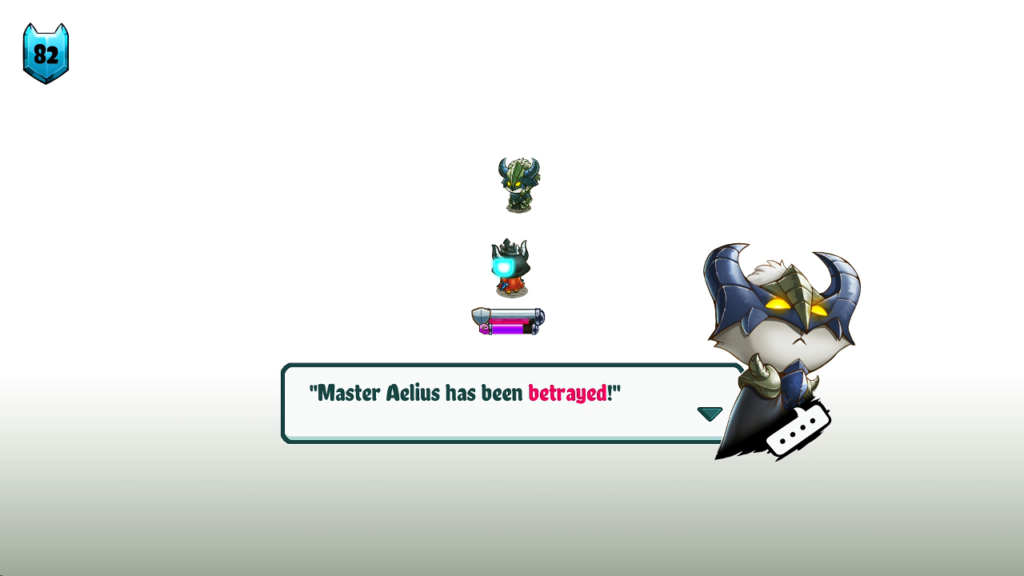
This is what makes Cat Quest’s ending so frustrating. While much of the main narrative and the sidequests attempt comedy, Drakoth’s contributions are singularly tragic and serious. His arc ends in a twist that’s played completely straight in a setting that otherwise revels in mocking cliches. Its grave tone contrasts poorly with otherwise light-hearted parodies of stock fairytale and fantasy tropes.
What’s worse, Drakoth’s story is intertwined with an unnecessary desire to explain the origins of Felingard and its people. It’s a discordant journey into science fiction, and not in an interesting way. I wish the story didn’t go to these places. Sometimes a fantasy continent of cat wizards and warriors fighting dragons should just exist without explanation. These are the most beautiful creations.
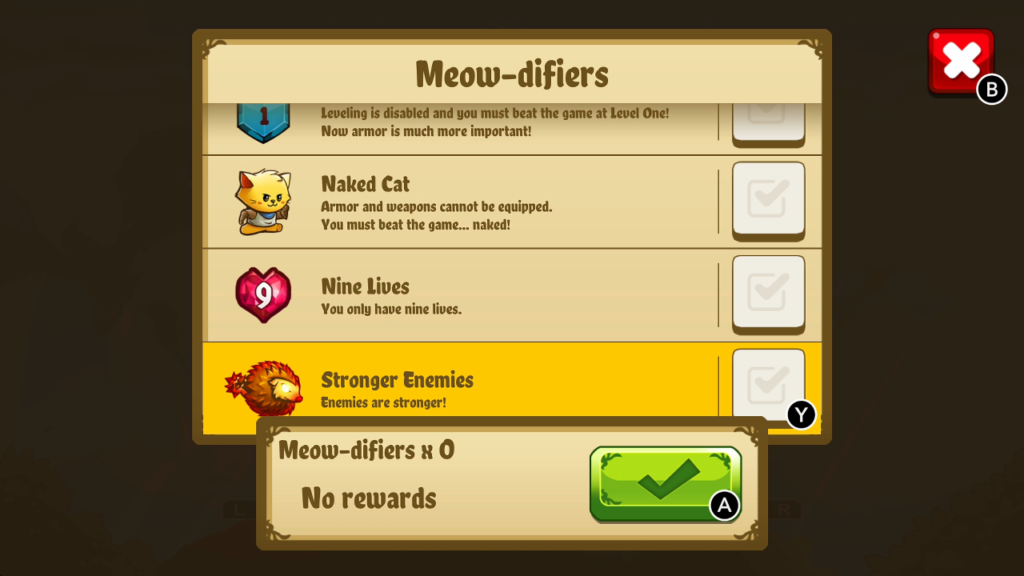
Most frustrating of all is how suddenly everything in Cat Quest comes to a stop. I breeze through its main narrative, pinballing across Felingard, rebounding between towns and quest objectives, delving into dungeons, water-walking across oceans and arm-flapping over mountain ranges with an ease that leaves me breathless and exhilarated. Then the story ends, all of the sidequests are finished, all of the chests are opened and there is simply nowhere left to go.
Cat Quest’s one speed bump is this ending. When I have drained Felingard of all its objectives and viewed the credits, I have to start New Game Plus before the momentum picks up again. It’s a minor inconvenience, but it feels like a major disruption, like a sprinter having to stop at 500 meters in a 1000 meter dash to shake hands with the stadium owner before they can continue running. Once I’m moving again, now with interesting modifiers like increased enemy damage and a limit of nine lives for the player character, I forget all about it for another ten hours.
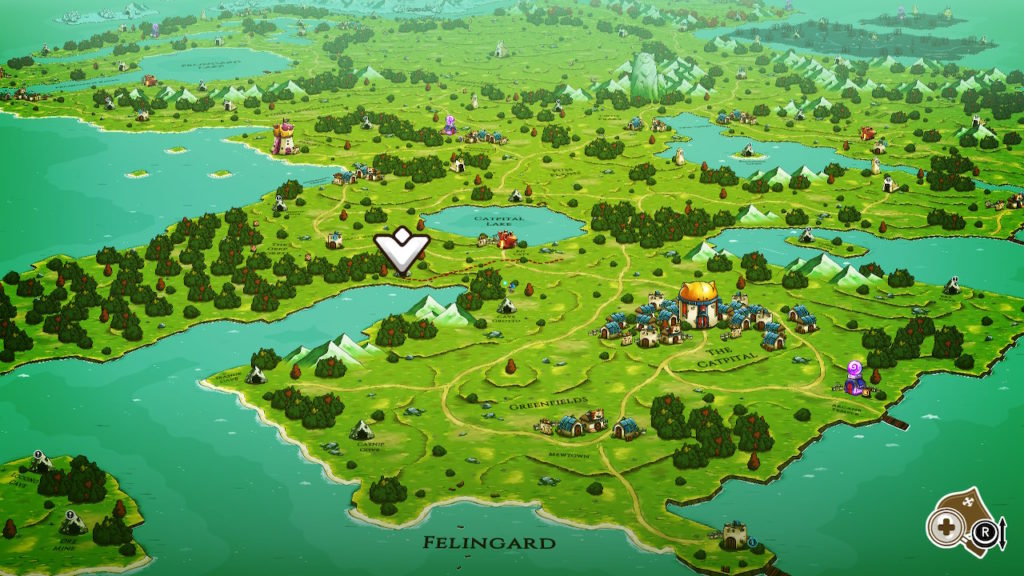
Cat Quest is an incredible intersection of speed and simplicity. Its RPG mechanics are deep enough to support the unique expressions of many individual playstyles, but not bogged down by too many numbers and choices. Combat is quick without sacrificing danger, dungeons are small without casting off a sense of adventure, and Felingard’s breadth can be run across in less than a minute while still being filled with hours of adventures. That the humor rarely lands barely matters when the adventure more than makes the difference in keeping me engaged. It’s only an overly-serious villain and an abrupt ending that holds Cat Quest back from perfection. [Ed: My proofreader begged me to change this to “purrfection.” I declined.] Now as for its sequel…